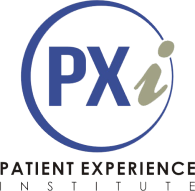Abstract
Although the definition of patient-centered care (PCC) remains unclear, researchers and healthcare professionals describe the concept as treating the patient as a unique human being with consideration for their physical and psychosocial needs and emphasize the importance of shared-decision making between patients and healthcare professionals. However, discussion around the connection and overlap between PCC and patient and family engagement (PE) has been limited. Some authors describe PE as an operationalization of PCC, while others consider PE a type of PCC. An enhanced understanding of PCC might allow for improvements in implementing PE across healthcare systems. Insight into the operationalization of PCC at a practical level may be attained through exploring models and programs introduced by various governments. We conducted an environmental scan examining models, approaches, and programs of PCC implemented by the governments of nine developed countries at regional and national levels, aiming to understand better how PCC is operationalized. We found seven major themes indicative of critical features of PE within PCC models: 1) recruitment and representation; 2) training and staff engagement; 3) rapport and relationships; 4) tools and support; 5) compensation and reimbursement; 6) knowledge translation; and 7) evaluation. Finally, we comment on how well the included PCC models promote diversity and cultural competence while highlighting the importance of cultural sensitivity and discussing potential strategies to integrate PCC and PE into healthcare activities.
Experience Framework
This article is associated with the Patient, Family & Community Engagement lens of The Beryl Institute Experience Framework (https://theberylinstitute.org/experience-framework/).
- Access other PXJ articles related to this lens.
- Access other resources related to this lens.
Recommended Citation
Wasim A, Sajan M, Majid U. Patient-centered care frameworks, models and approaches: An environmental scan. Patient Experience Journal. 2023; 10(2):14-22. doi: 10.35680/2372-0247.1806.
Creative Commons License

This work is licensed under a Creative Commons Attribution-Noncommercial-No Derivative Works 4.0 License.


